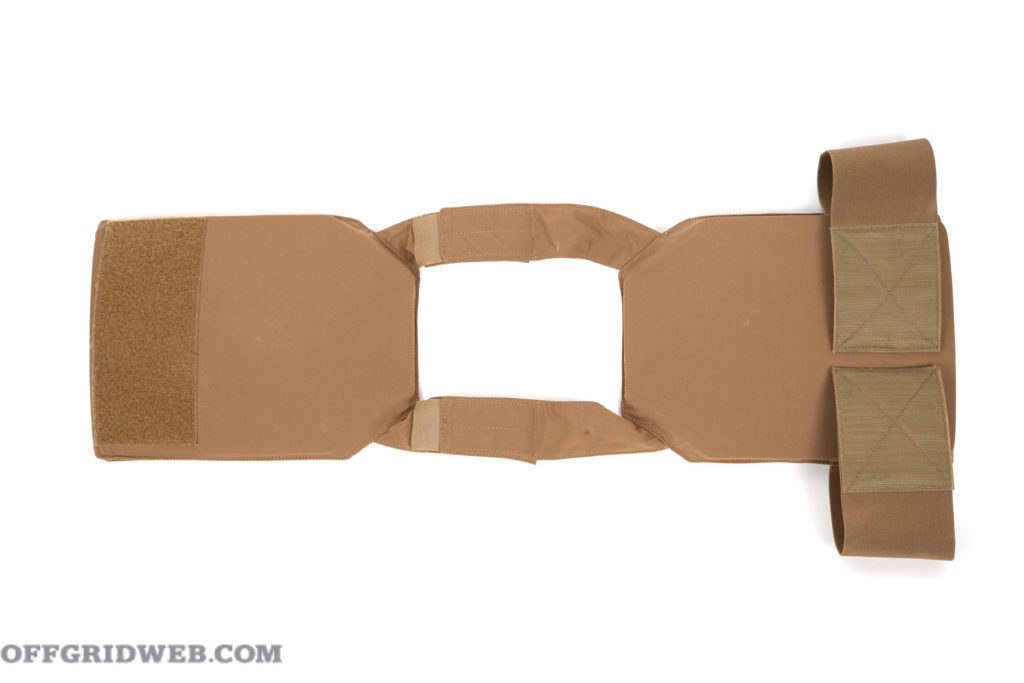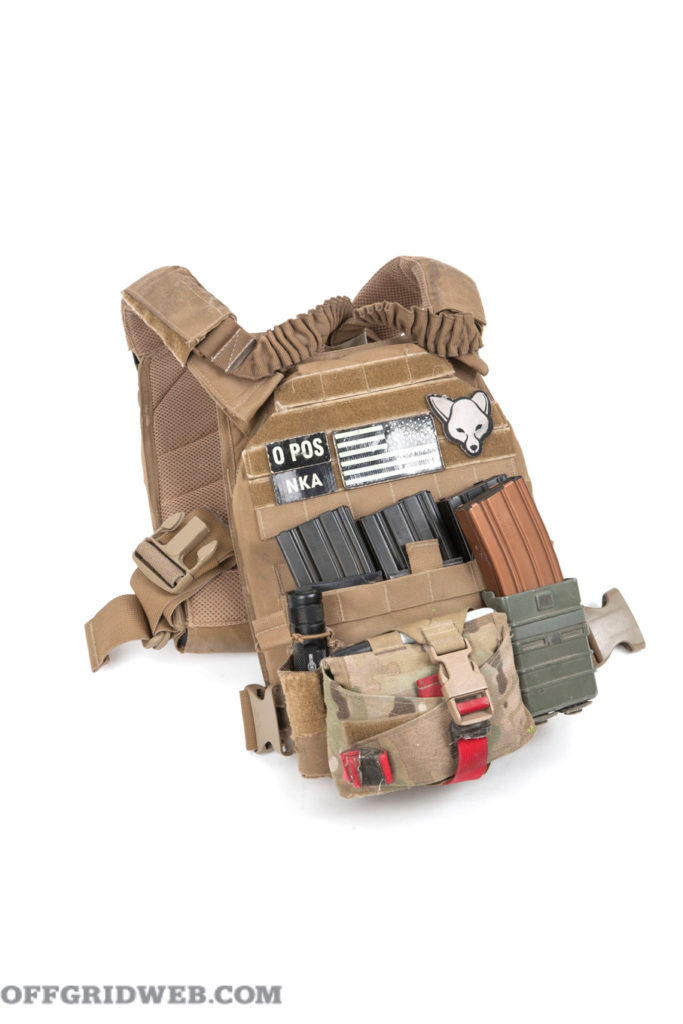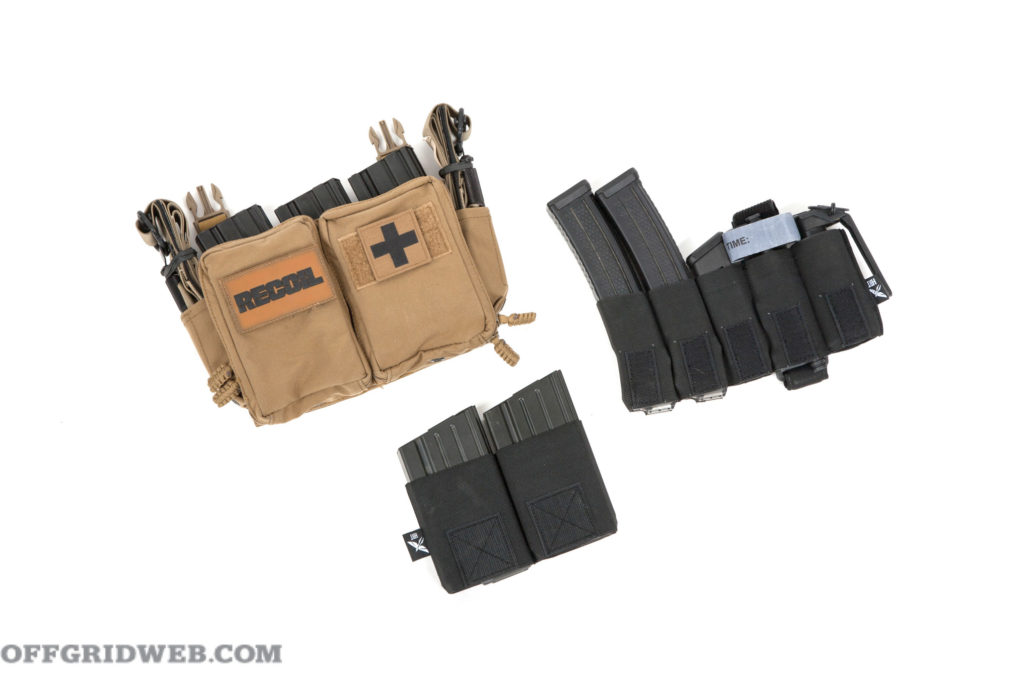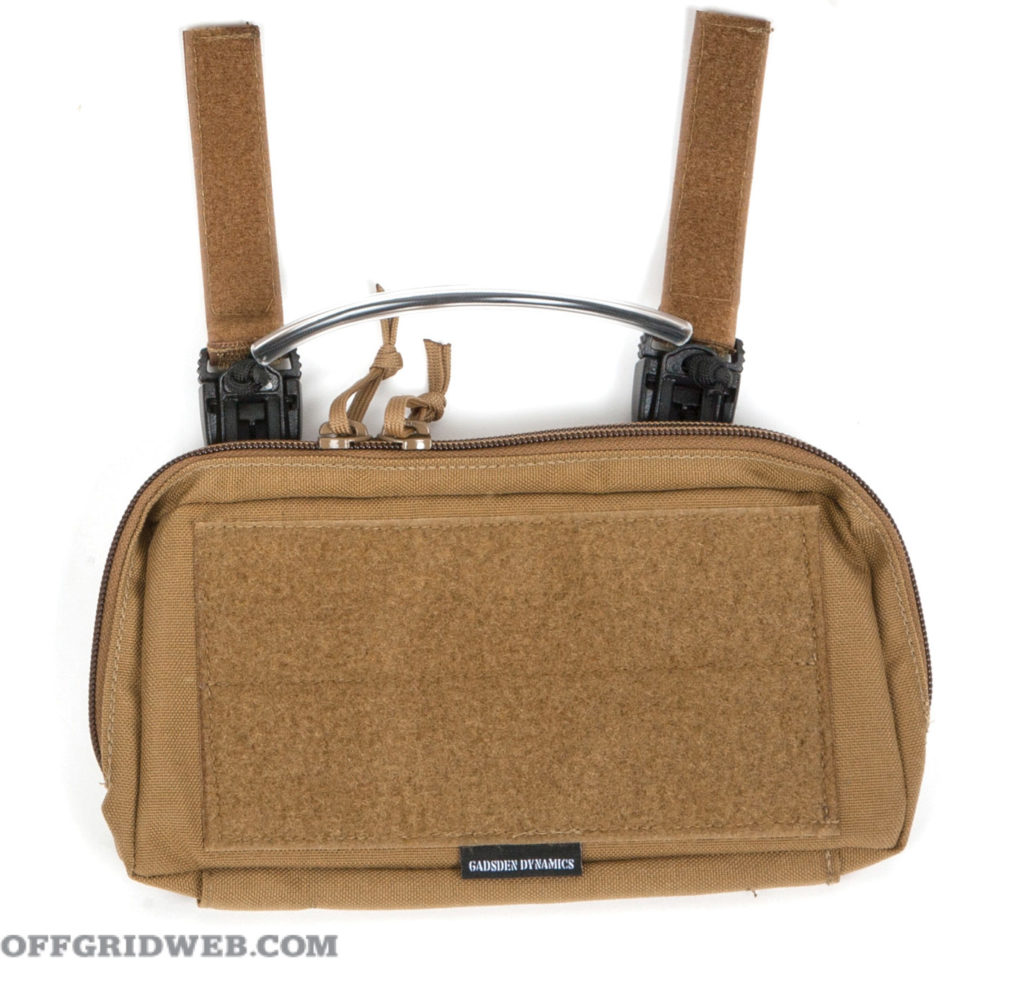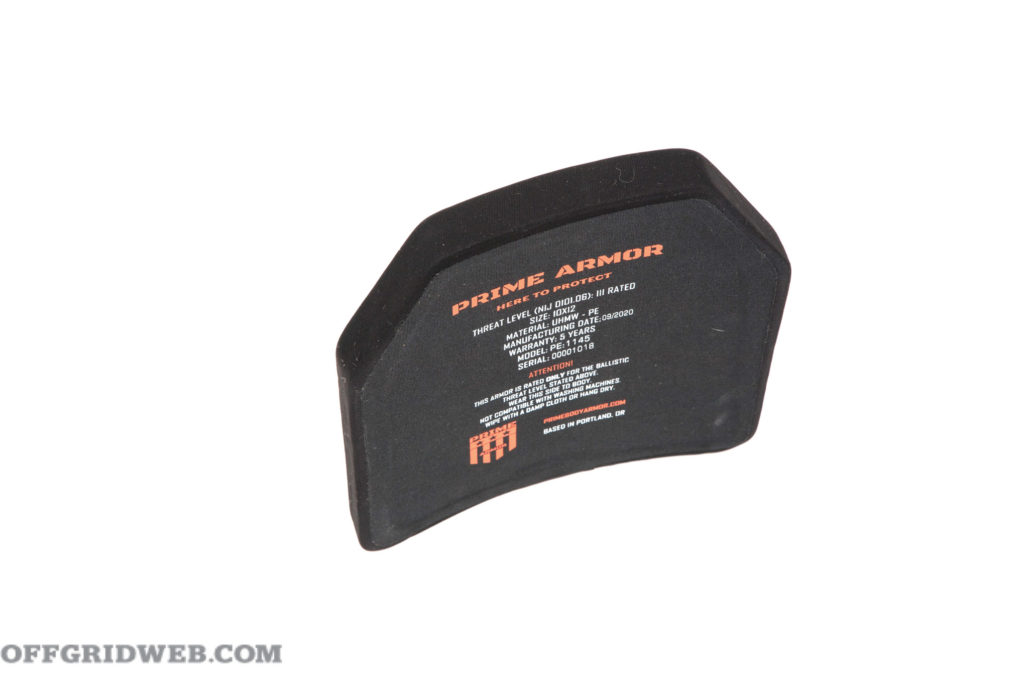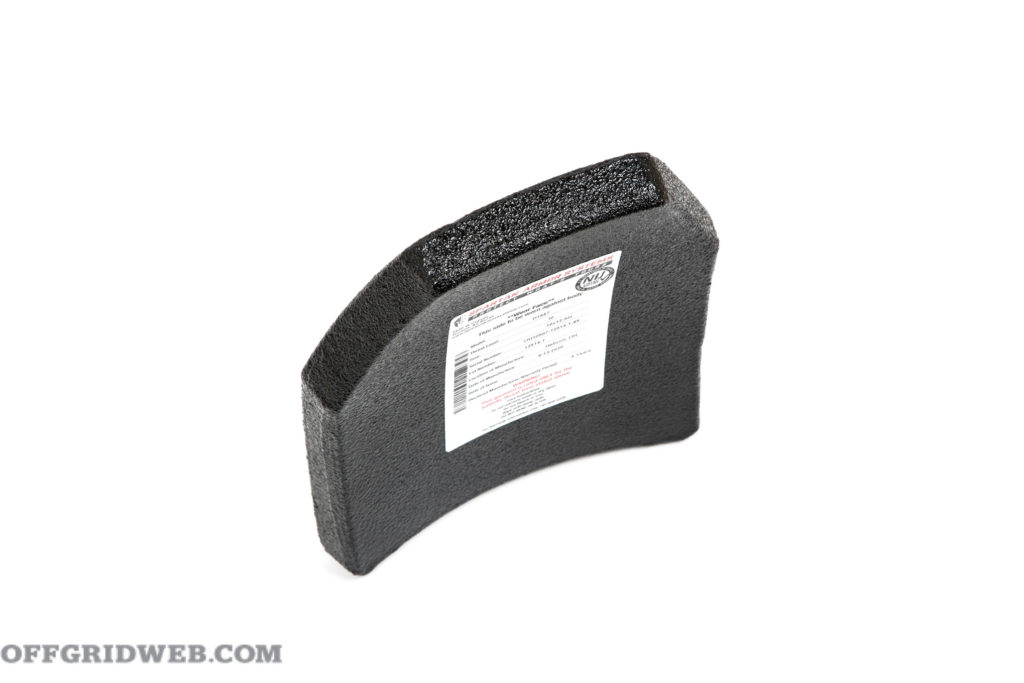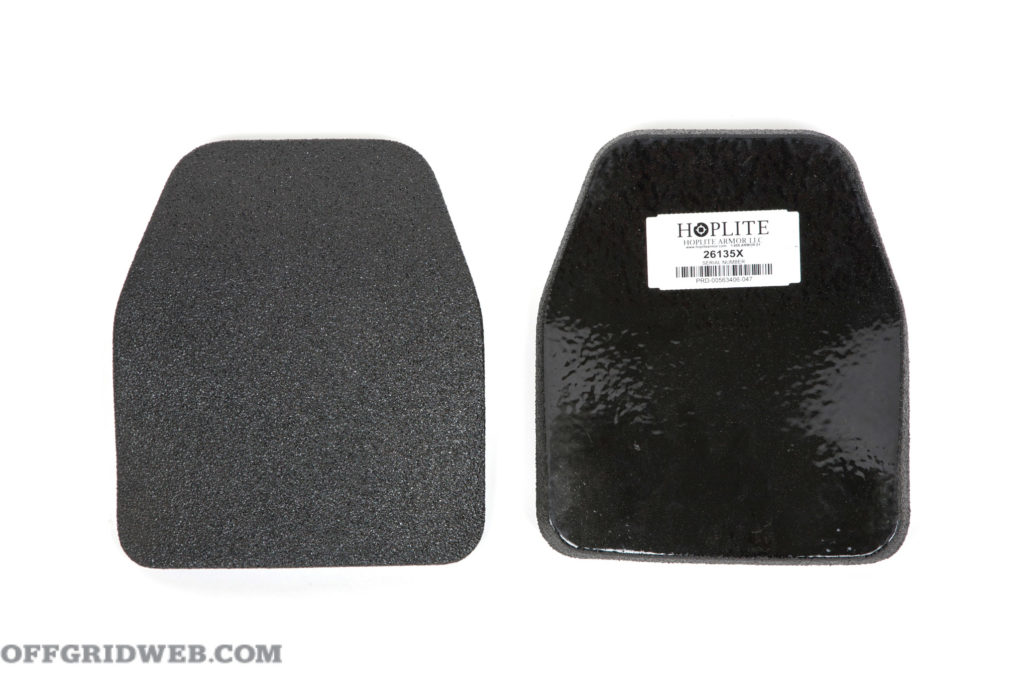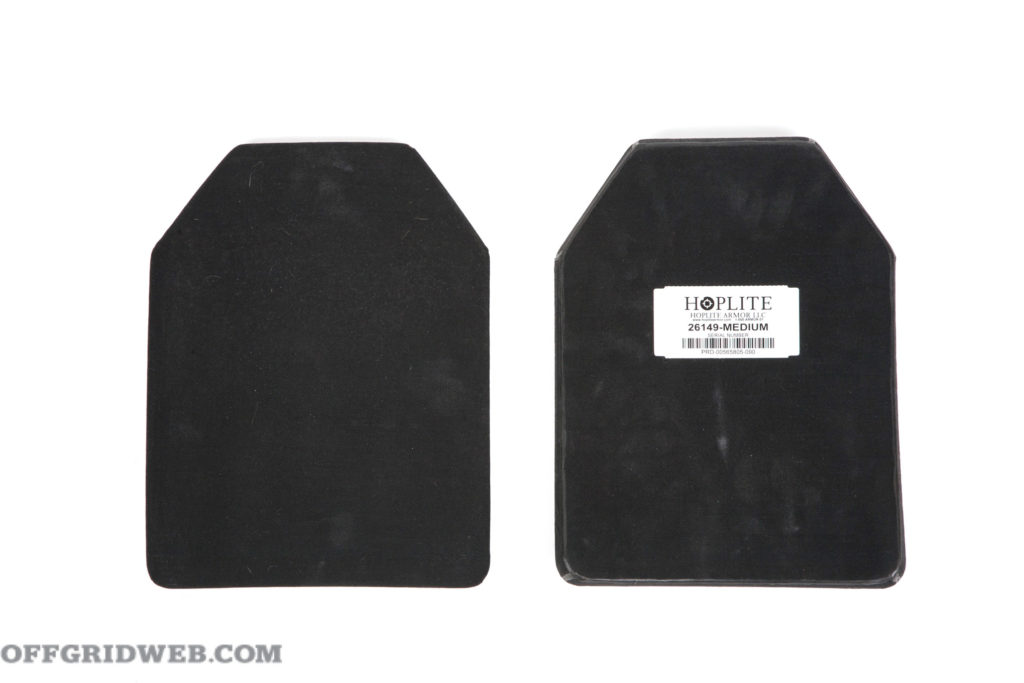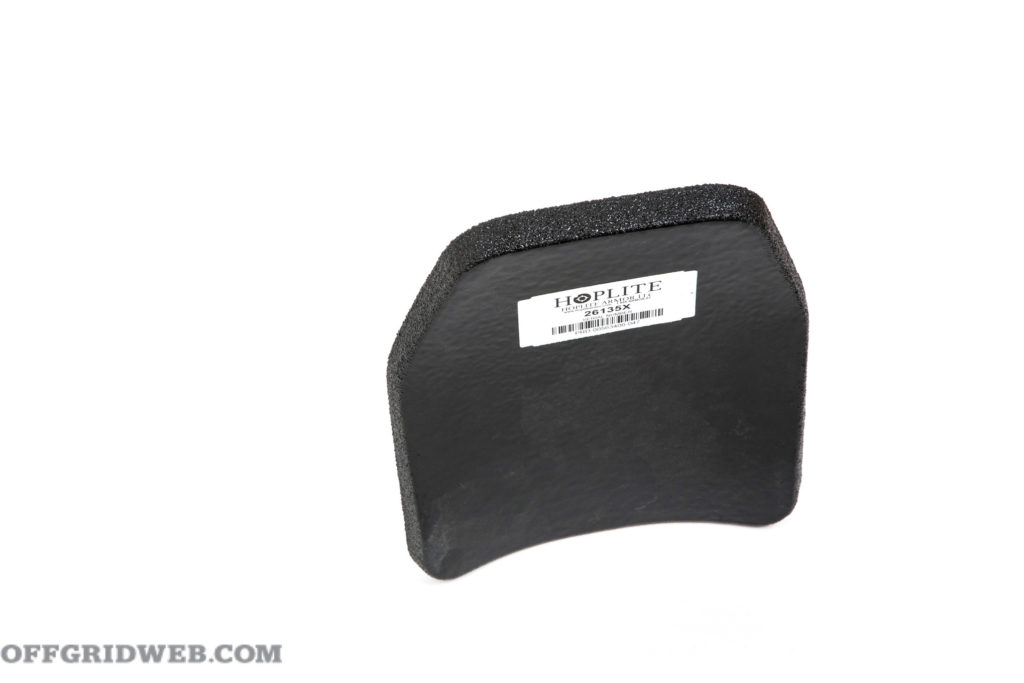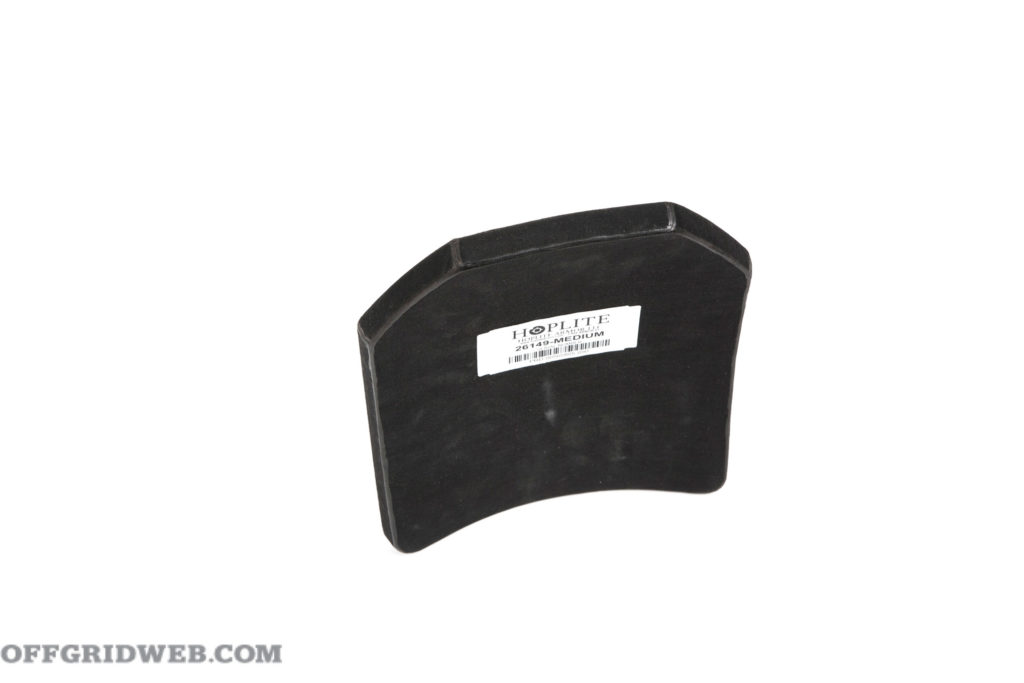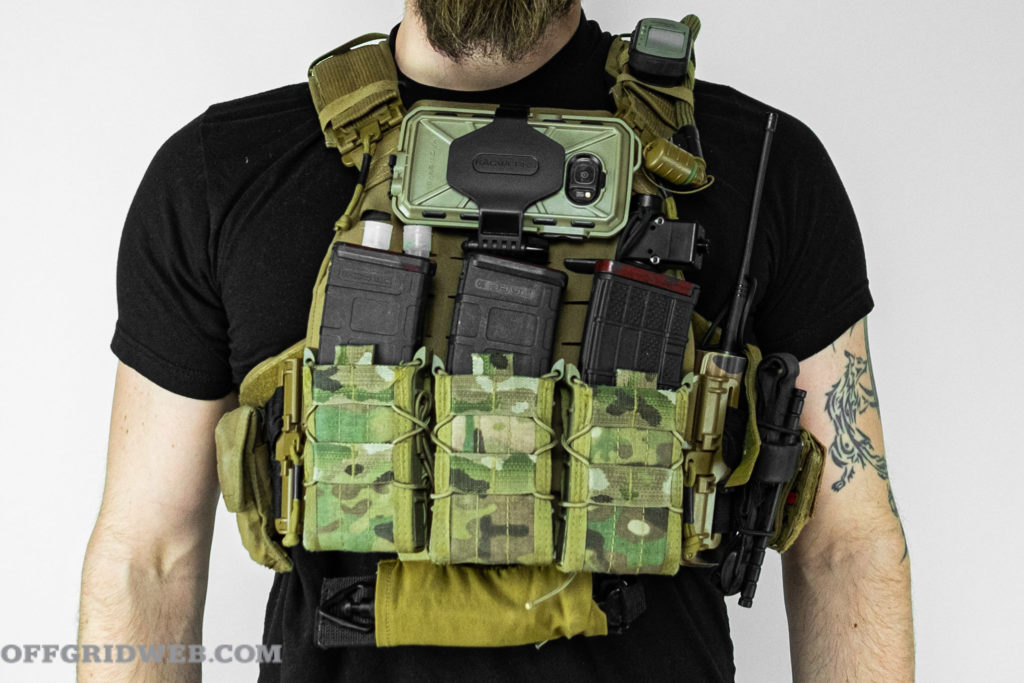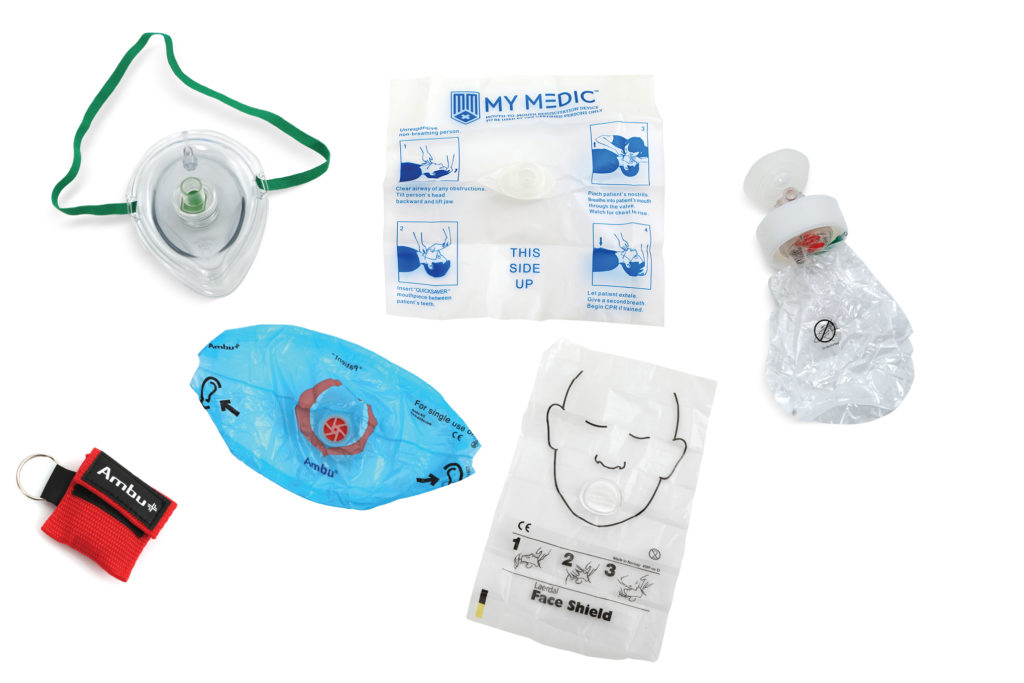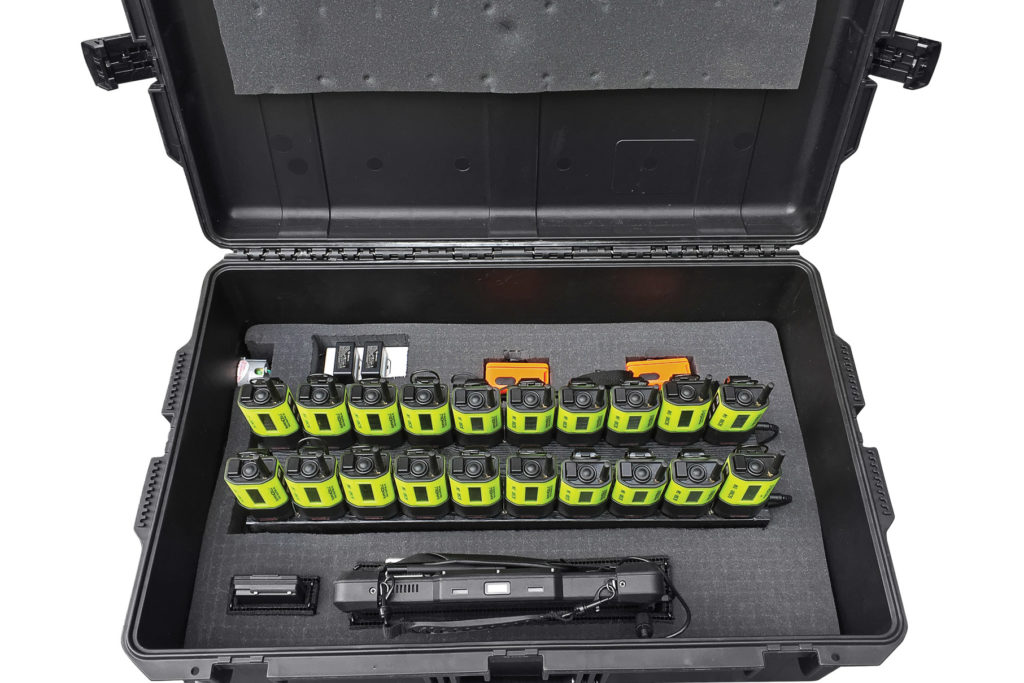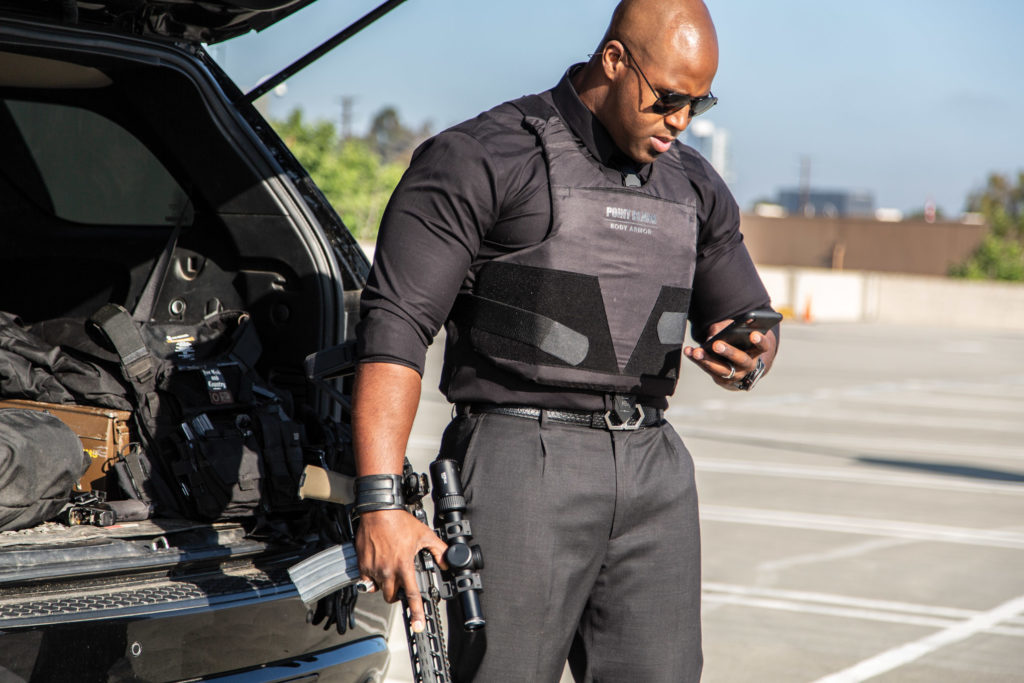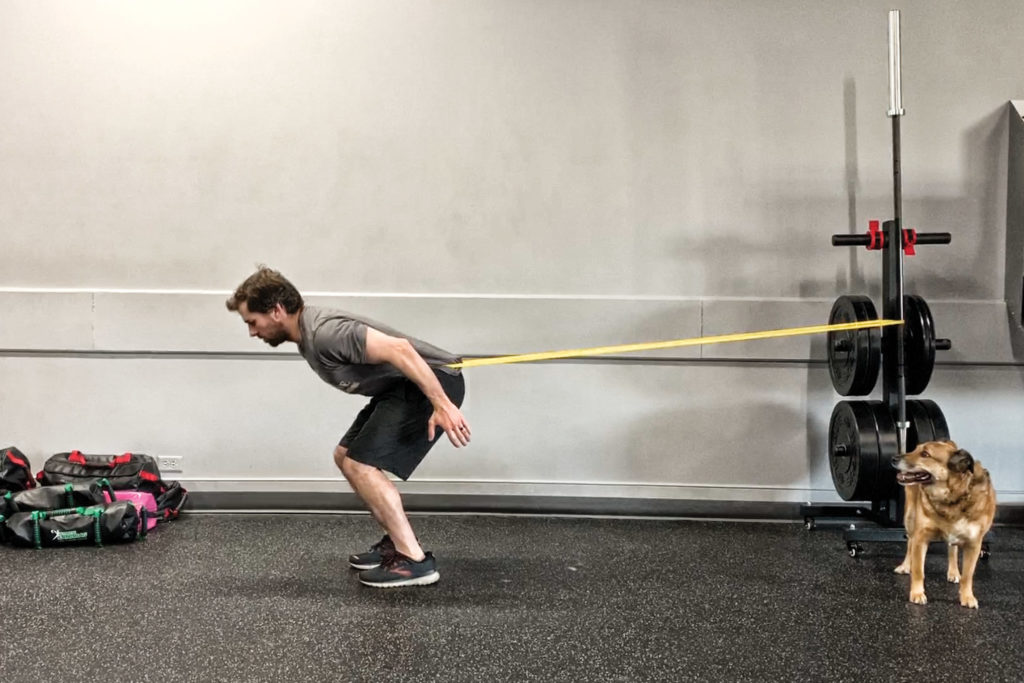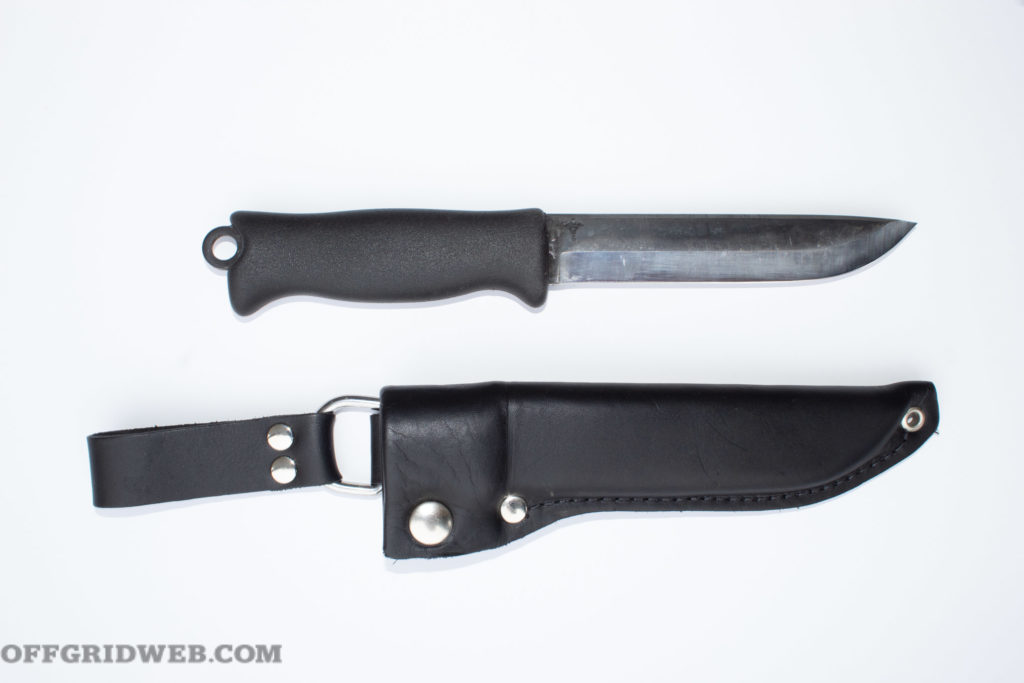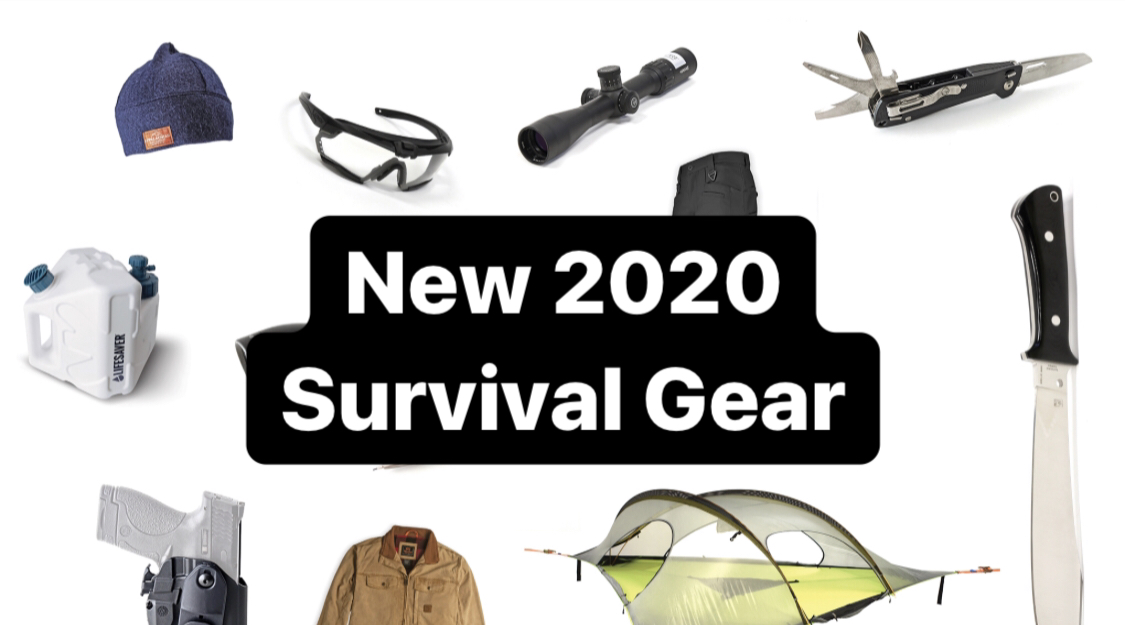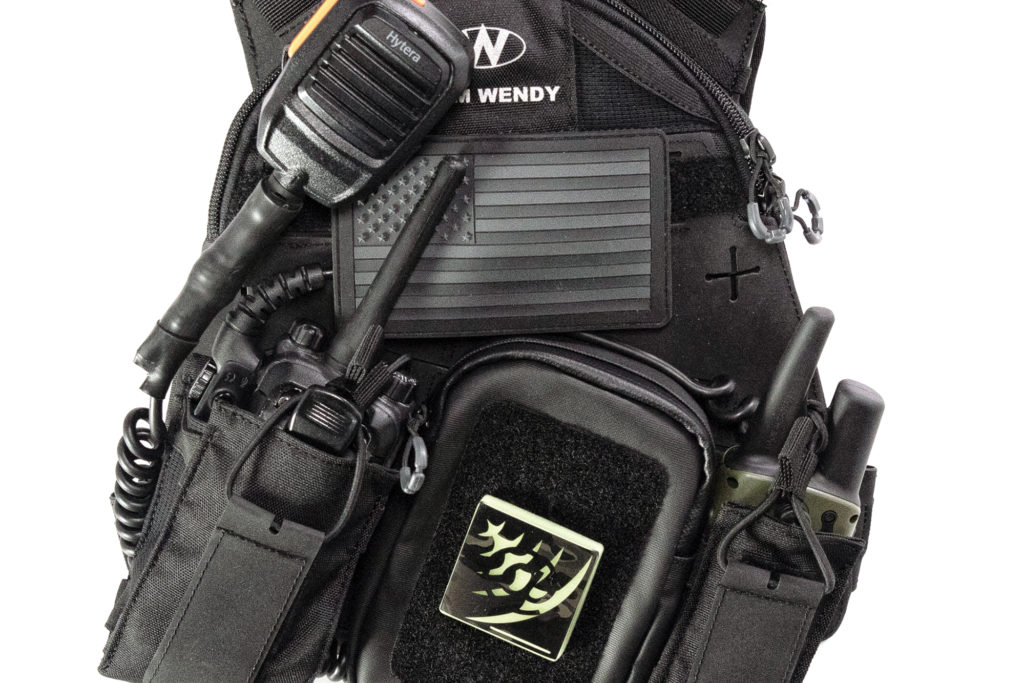When it comes to the protection of self, family, and home, we spend a lot of time talking about guns — not only our own, but also those a potential adversary may be using. But there’s a second leg to that conversation that often doesn’t receive due consideration: body armor. The proliferation of commercially available hard armor plates has spawned an ever-expanding market for the plate carrier. On one end are the ultra-minimalist “slick” plate carriers. These are typically meant to be worn under light clothing with little or no capacity to carry equipment. On the other end are military-type plate carriers that often come with an array of pouches permanently sewn to the carrier body. These pouches accommodate everything from spare mags to radios, grenades, hydration, and everything in between. The fastest-growing segment of the carrier market is the middle-of-the-road option of modular plate carriers. These carriers can be worn stripped down, but often come with Velcro or buckle attachment points to facilitate the addition of pouches, chest rigs, or placards that can be swapped out to carry different loads. With so many shapes, sizes, and configurations of plate carriers available, we wanted to provide a few examples of what’s out there, best uses, and options for configuration. Your needs will determine which style of plate carrier works best for you, but here are some examples from across the style spectrum …
“Slick” Plate Carrier
The absolute minimalist expression for running hard armor plates, stand-alone carriers are the best option when discretion is the order of the day. These types of carriers can be made to all but disappear underneath a light windbreaker, button-up shirt, or even an oversized T-shirt. If you want armor protection but aren’t carrying a rifle, this may be the way to go. These kinds of carriers can be seamlessly integrated into your normal EDC, imposing minimal restrictions on wardrobe while allowing unimpeded access to IWB holsters and other defensive tools.
Above: First Spear’s “Slick” plate carrier is an ultralight, bare-bones carrier designed for maximum concealment.
Our example here is from First Spear and is appropriately named “Slick.” The Slick is just about the sleekest, leanest footprint you could ask for from an armor carrier. The body of the carrier is made from ultra-thin, stretch fabric material, with a stretch cummerbund that Velcros in place. It also features simple, Velcro-adjustable nylon shoulder straps. This model was designed specifically for low-profile law enforcement, intelligence, and protective missions that require the armor to be worn under any variety of street clothing. If you remove the plates, the entire carrier can be balled up and stowed in a large cargo pocket. There’s no provision to carry gear directly on the carrier, but it can be paired with a minimalist chest rig (such as the Blue Force Gear Ten-Speed we reviewed in Issue 36) if the situation dictates.
A carrier like this might be good for members of your family who aren’t designated as primary responders to an armed threat, but who want protection from said threats. It’s also an excellent choice to keep in your vehicle if you frequent high-risk areas or must pass through urban areas under civil unrest.
URL: www.first-spear.com
“Full-Up” Plate Carrier
At the opposite end of the spectrum are dedicated “full-up” or direct-action-oriented plate carriers. These carriers come with on-board load carriage built in, and are favored by military special operations and law enforcement tactical teams, who will almost always be working with a carbine or submachine gun and require supporting equipment like radios, hydration, extra ammo, and distraction devices.
Above: Tyr Tactical’s Basic Plate Carrier is a design suited for full-time tactical teams and armed professionals, but will be hard to conceal when fully laden.
Our example is Tyr Tactical’s Basic Plate Carrier. The BPC comes covered in PALS webbing loops for attaching MOLLE pouches and includes a “kangaroo” pouch in the front that can hold three AR-style magazines. This particular carrier was used by the author while working as a high-threat protective specialist overseas. In addition to the kangaroo pouch, an additional magazine pouch, trauma medical kit, flashlight pouch, and hydration carrier were attached for daily protective duties in war zone environments.
The utility of this style of carrier is somewhat limited for the “average” citizen, due to its bulky nature and overt profile. But if you’re protecting a ranch, business, or other large property where the use of rifles is appropriate and the appearance of being armed (or armored) isn’t a concern, the ability to carry extra ammo and gear on your person could be a boon.
URL: www.tyrtactical.com
Modular Plate Carrier
Modular carriers are quickly becoming the most popular style of plate carrier due to their flexible, reconfigurable nature. They bring a best-of-both-worlds utility to those looking for a single plate carrier to cover an array of potential scenarios. These can be worn as a slick carrier, or in full-up configuration with the addition of placards and drop-down pouches.
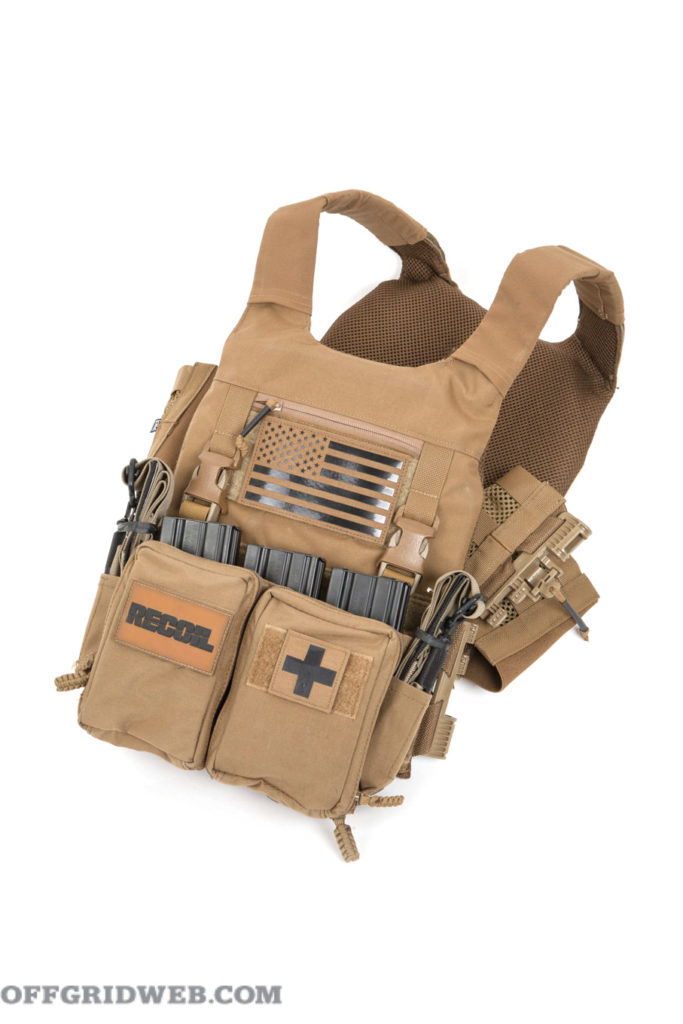
Seen here is the Defense Mechanisms Mission Essential Plate Carrier (MEPC). The MEPC can be pieced together on Defense Mechanisms’ website, with multiple sizes of plate bags and different types of cummerbunds added à la carte. This allows you to put together the carrier that fits your needs most closely. Speaking just to the cummerbunds, there are four versions available: a 3- and 5-inch-wide version with two and three rows of nylon mesh MOLLE webbing, respectively. Each of those are available as a MOLLE-only version, or as a “hybrid” cummerbund, featuring a section of MOLLE mesh attached to a section of stretch material. The hybrid version can expand/contract to accommodate extra layers of clothing or small size differences between multiple users; this variant also comes with ROC quick-release buckles. These quick-disconnect latches come in handy when using the MEPC with a placard or chest rig, allowing you to don/doff the carrier without lifting up the placard to tear away the Velcro between the cummerbund and front plate bag. Our test sample came with the 5-inch hybrid cummerbund. The MEPC comes with two Fastex buckles hard-sewn to the front of the carrier to facilitate the use of placards while minimizing bulk if you choose to run it slick.
Defense Mechanisms does offer their own front placards, which are scalable in their own right, but we wanted to illustrate the cross-compatibility of these types of carrier/placard systems. So, for our “heavy” configuration, we used a Maximus placard from HRT Tactical Gear. HRT makes their own carrier, but the de facto standardization for placard attachment means there was no issue transplanting their Maximus placard onto the MEPC. We really like the Maximus for situations that require a substantial amount of load carriage — it comes standard with a kangaroo pouch for ammunition, two square general-purpose pouches and pistol-mag-sized pouches on either end. This placard was also designed for maximum modularity. The open-top pistol magazine pouches include flexible polymer inserts for magazine retention. Since these are secured in place with Velcro, we removed them and repurposed those pouches to carry a pair of SOFT-T tourniquets. The kangaroo ammo pouch is also Velcro-lined, and the Maximus is available with three types of soft-loop inserts for different types of magazines: a three-mag insert for AR-15 style mags, a two-mag insert for larger AR-10, FAL, or M14-style mags, and a five-mag insert for submachine gun or pistol-caliber carbine mags. The two general-purpose pouches include loops for gear retention. We used one for medical equipment and one for pyrotechnic gear — a Sport Smoke smoke grenade and IWA international civilian-legal flashbang device. This combination of placard and carrier allow us a high-profile armor carriage setup ideal for tactical training or high-threat defense scenarios.
If a couple of spare mags is all you need to have on you, Tactical Tailor makes Velcro-backed magazine pouches (not shown) that can attach directly to the loop panel on the front of the MEPC. This gives you a few extra reloads without the bulk of a larger placard like the Maximus.
Finally, if you already have a stand-alone chest rig, this can also be integrated onto the MEPC, assuming your buckles line up properly. A small company called AXL Advanced produces a handy product called the Chest Rig Retention Kit. This kit consists of four Fastex buckles on shock-cord loops that can be threaded through the MOLLE loops in your cummerbund. The system allows you to adapt a variety of chest rigs to your modular plate carrier. This is a great tool to have in your gear locker if you want to run multiple types of carriers with one chest rig.
In our examples here, you see the Redwire Gear Emergency Management Rack chest rig, which was featured as a stand-alone chest rig in Issue 38. With the AXL Advanced kit, that same rig was adapted to the Defense Mechanisms carrier as placard. Now you only need a single chest rig that functions with two types of plate carrier configurations.
But if a placard or chest rig alone isn’t enough load carriage, modular plate carriers can often be augmented with drop-down or abdominal pouches, sometimes referred to as danglers. These pouches hang freely below the plate carrier itself and are typically used by tactical teams to carry medical, breaching, or signaling supplies. To illustrate this, we tried out the Removable Organized Modular (ROM) pouch by Gadsden Dynamics. The ROM is a simple, single-compartment drop-down pouch that’s fully loop-lined and comes with several removable loop retainers for gear organization. The ROM offers a unique quick-detach feature, allowing it to be “torn” off of its mounting placard via the use of friction-release buckles. Paired with a dedicated placard like the Maximus, it can be used as a larger compartment for more comprehensive medical kits. The Redwire EMR is also paired with that company’s own Demo Pouch, which we filled with chemlights, strobes, and a Sport Smoke as an emergency signaling kit with low-light capability. Individual equipment load-outs are highly personal and mission/need specific, but drop-down pouches allow an exponential increase in storage without any extra front-facing bulk.
These are by no means the only options available in each category. There are many companies offering a myriad of carriers, placards, chest rigs, and drop-down pouches. But these examples offer a good outline of the different types of carriers, their potential uses and different options that can be cobbled together for that Goldilocks just-right-fit for your wants and needs in armor and load carriage.
URLs:
Some Notes About Plates
Armor plates, protection ratings and cuts/sizing could fill an entire article all by itself, but since we’re talking about carriers, we wanted to touch on some of the variations in plates and what’s out there.
For the sake of brevity, we’re going to talk about Level III and IV plates, and we’re going to skip over rolled steel plates — which, despite their bargain-basement cost, come with a host of pitfalls including substantial weight and a higher risk of spalling. Of course, steel plates certainly offer better protection than no plates at all, but they aren’t our first choice given the existence of ceramic and polymer alternatives.
The National Institute of Justice (NIJ) has set forth a standardized testing protocol for armor plates that has been the national template for many years. The top two tiers of rifle-rated hard plate protection set forth by NIJ are Level III and Level IV. The very thinnest of bottom lines is that NIJ-compliant level III plates must defeat six rounds of 7.62x51mm NATO ball ammunition, similar to commercial .308 Winchester. Level IV plates must stop between one and six rounds of 7.62x63mm NATO (.30-06) M2 armor-piercing ammunition. The commercial market has filled in the gaps with non-standardized protection levels like Level III+ and “Special Threat” plates, which may augment the NIJ standards with additional protection against 5.56mm NATO “green tip” armor-piercing rounds or 7.62x54mm rounds like those fired from the Russian Dragunov sniper rifle or PKM machine gun. Make sure you thoroughly read the manufacturer’s protection ratings before purchasing any hard armor plates to ensure they fulfill your personal requirements. Also, note that many plates are said to “meet NIJ standards,” but may not have been independently tested and certified to be NIJ Compliant. Always check the manufacturer’s documentation thoroughly for test results, or search for the most current Compliant Armor list on nij.ojp.gov.
From an end-user perspective, most people are concerned with a couple of key characteristics: cost, protection level, weight, and thickness. Lighter plates are easier to wear for long periods, but may also be thicker. Thicker plates may offer more protection but also add bulk, if concealability is a concern. And all of these things will affect price. What follows are some examples of plates at different protection and price levels We’ll highlight the key dimensions for direct comparison. In an attempt to keep the comparisons as “apples to apples” as possible, all plates are size medium SAPI-cut plates.
Prime Armor Level III Plates
Size: Medium
Dimensions:10 by 12 inches
Thickness: 1.1 inches
Weight: 3.75 pounds per plate
Advertised Protection Level: III
Advertised Threat Rounds Defeated:
- 5.56x45mm NATO M193 FMJ
- 7.62x51mm M80 FMJ
- 7.62x39mm FMJ
Price: $398 (set of 2 – note: sold per plate at $199 each)
Notes: This is the only model of plate that Prime Armor sells, and we think these plates are an excellent starting point to balance price versus protection. However, they’re so thick we had to swap our size medium Defense Mechanisms plate carrier for a large just to fit these plates. They aren’t what we’d choose for low-profile use. If that’s not a concern, a pair of plates comes in at sub 8 pounds and sub $400, which is a pretty good ratio of cost to weight to protection.
Be aware that they won’t protect against any armor-piercing rounds. This includes the ever-popular 5.56mm “green tip” M855 ammo that’s widely available on the commercial market, and, in our opinion, the armor-piercing ammo you’re most likely to encounter inside U.S. borders. There’s also “mild steel core” ammunition available in 7.62x39mm Russian, which is similar in capability. Though less common than green tip, it’s still out there and should be factored into the level of protection you choose.
Having said that, we also think these plates are an excellent option for CQB and shoot-house training classes. Such classes often require students to wear rifle-rated plates, but also prohibit the use of any kind of armor-piercing ammo. So, Level III plates hit the sweet spot for a situation that requires rifle protection but where you know armor-piercing rounds won’t be present. Their lightweight polyethylene construction makes these plates a breeze to wear for hours on end multiple days in a row.
Spartan Armor Level III+ Plates
Size: Medium
Dimensions: 10 by 12 inches
Thickness: 1.1 inches
Weight: 4.65 pounds per plate
Advertised Protection Level: III+
Advertised Threat Rounds Defeated:
- 5.56x45mm M193 FMJ
- 7.62x39mm M67 FMJ
- 7.62x51mm M80 FMJ
- 5.56x45mm M855/SS109 AP
- 7.62x39mm M43 Steel Core
Price: $721 (set of 2)
Notes: These plates are the most expensive on our list, by a healthy margin. This is a good opportunity to re-emphasize the balance of cost against other factors. It might make sense on the surface that higher protection levels equal higher cost. But, really, it’s a combination of protection and weight that produces the cost.
The Level IV plates listed on the next page offer higher protection, but these Level III+ plates are substantially lighter for almost the same level of protection. In fact, the only difference in protection between these Level III+ plates and the Level IVs are .30-06 armor piercing. Unless you’re expecting to get in a firefight with adversaries carrying M1 Garand rifles, Level III+ plates will stop anything you’re likely to encounter inside the United States, and they’re almost 5 pounds lighter than Level IV equivalents. Does that matter? A loaded 30-round AR magazine weighs 1 pound. A 100-ounce water bladder weighs over 6 pounds. Then, add pistol mags, smoke grenades, radios, or whatever else you keep on your kit. Depending on what your loadout looks like, the extra money and small sacrifice in protection level may provide you with a more comfortable, well-rounded setup that still meets all your needs.
As previously stated, “Level III+” isn’t an official NIJ rating. By that scale, these plates are only Level III-rated as they don’t cover the aforementioned .30-06 AP rounds. But if you see that plus sign, or other notations like “Special Threat rated” on a product description, make sure you read down into what specific calibers/rounds are covered by that plate.
URL: www.spartanarmor.com
Level IV Plates:
We have two examples of Level IV plates here, both from Hoplite Armor. We wanted to show you how even two plates of the same rating from the same manufacturer can offer trade-offs in dimensions and cost. Hoplite has a wide selection of plates in a variety of protection levels. The two models seen here are #26149 and #26135 respectively. The primary difference, on first glance, is that the 26149 SAPI cut plates are covered in a thin fabric sheath while the 26135 Swimmer cut plates are coated in a hard Line-X coating.
Why does the outer shell matter? If you’ve ever seen a photo of a plate that has been shot, you may have seen a light, almost flaky substance that appears to be crumbling and falling out of the bullet hole like crushed plaster. This is normal to see, as the composite material gets crushed/sacrificed to protect the wearer. Hoplite says that using Line-X coating instead of fabric helps hold this material together and keep it inside the plate, enhancing the multi-hit capability of the 26135 model.
The 26149, with fabric shell, is still multi-hit capable. The hard shell is simply an enhancement of this capability.
Hoplite Armor Level IV Plates
Size:
- 26149 – Medium (SAPI Cut)
- 26135 – Medium (Swimmer Cut)
Dimensions:
- 26149 – 12.5 by 9.5 inches
- 26135 – 11.3 by 9.6 inches
Thickness:
- 26149 – 0.74 inch
- 26135 – 0.74 inch
Weight:
- 26149 – 7.65 pounds per plate
- 26135 – 6.7 pounds per plate
Advertised Protection Level (both models): IV
Advertised Threat Rounds Defeated (both models):
- 5.56x45mm NATO M193 FMJ
- 7.62x51mm NATO FMJ
- 5.56x45mm M855/SS109 AP
- 7.62x51mm NATO AP
- 7.62x39mm API
- 7.62x39mm M43 Steel Core
- 7.62x54mmR L/LPS/B-32 API
- .30-06 M2 AP
Price:
- 26149 – $479 (set of 2)
- 26135 – $598 (set of 2)
Notes: If you choose to run a carrier like First Spear’s Slick, which is made of a very thin fabric material, the rough Line-X coating on the 26135’s may eventually damage the carrier. An ultra-light, slick carrier run by itself (no chest rig or pouches attached) may make the heavier plates with fabric shell an acceptable trade-off. But if you’re running a larger carrier with four to five loaded magazines and additional equipment, the 2-pound difference between these plate sets starts to matter a little more.
URL: www.hoplitearmor.com
Conclusion
Again, your armor plates are part of a larger load-out. The key to long-term success with minimal fuss and no double-spending is to do your research ahead of time and assemble your components as a protection/load carriage system that meets all your requirements. Size, weight, thickness, and protection level will all influence plate selection. Load-carriage requirements and concealability/outward posture will likely be deciding factors for plate carriers. The examples shown here are by no means a comprehensive list of what’s out there, but a sampling of some of the different combinations that can be had.
[Editor’s Note: Photography by Patrick McCarthy. This Article First Appeared in OFFGRID #42.]
More on Plate Carriers:
- Front Toward Enemy: Tyr Tactical Plate Carriers.
- Upgrading the Tyr Tactical Pico-D’s.
- How to Set up a Plate Carrier.
Related Posts
The post Plate Carrier Types: Stronger than a Speeding Bullet appeared first on RECOIL OFFGRID.



